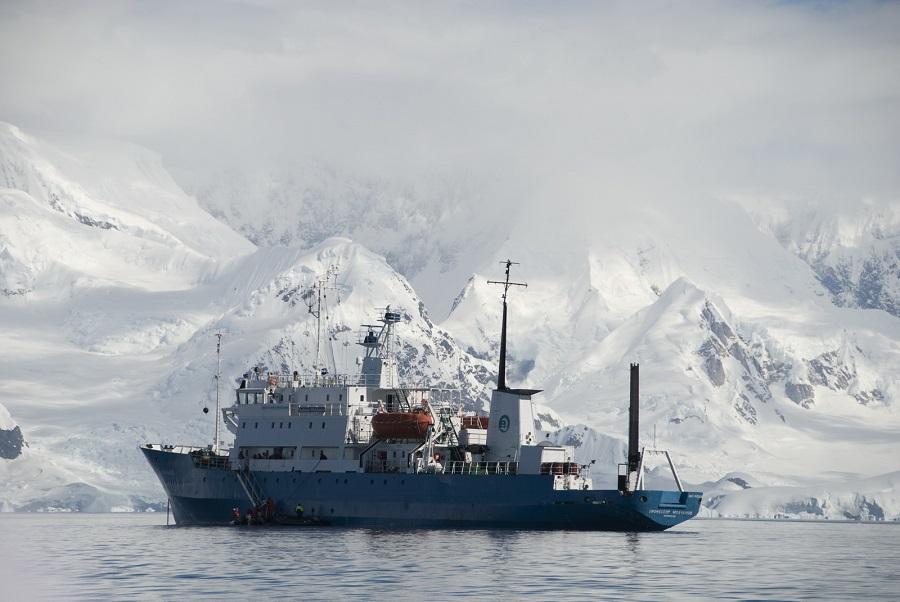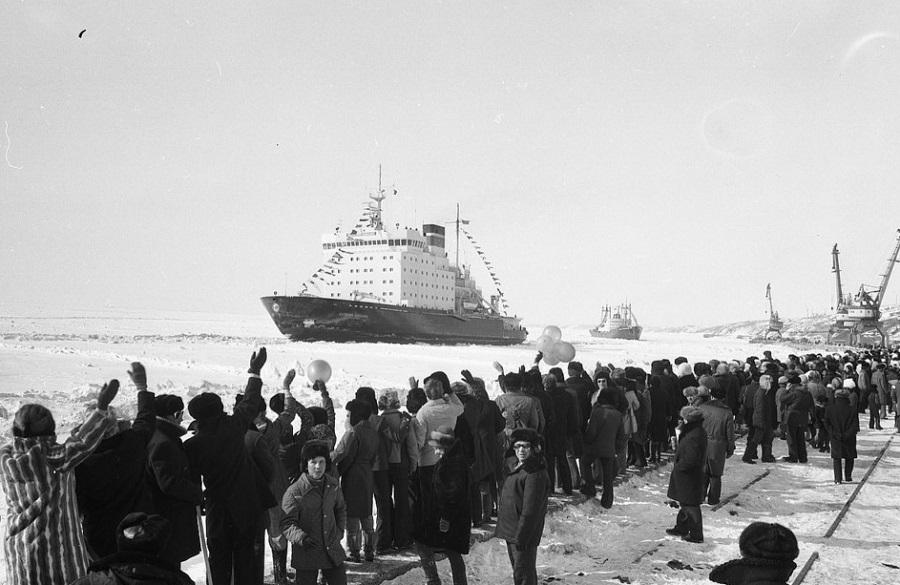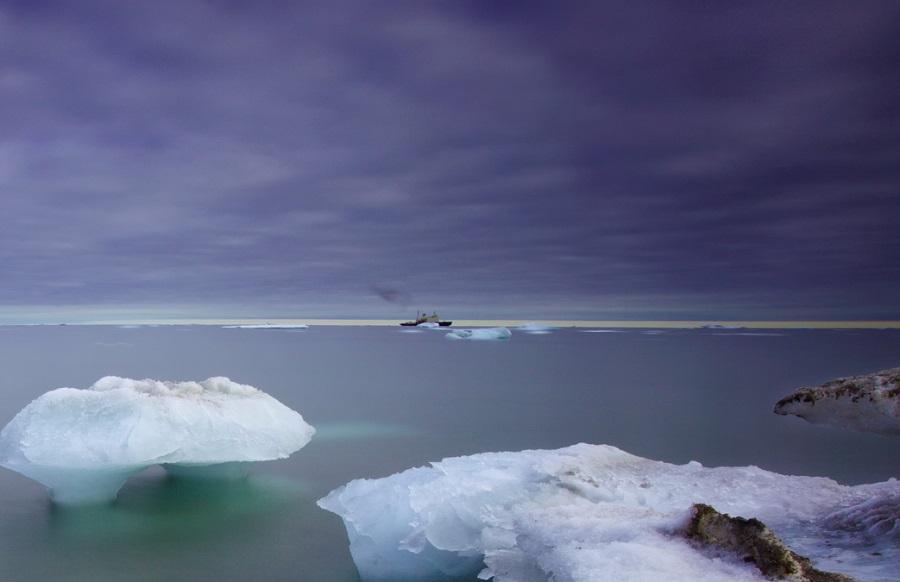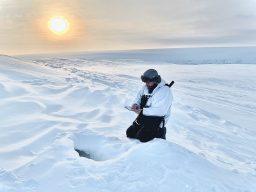
Photo: Yaroslav Nikitin / GeoPhoto
The Arctic is a region firmly connected in the mass consciousness of Russians with the theme of achievements. This tradition was formed back in the 1930s, when the Arctic became the arena for demonstrating the successes of the Soviet government – as it was then presented, inaccessible in the former, tsarist Russia.
The tone was largely set by S.M. Kirov:
“What seemed completely impenetrable yesterday, where, as they said, Makar did not drive calves, where in tsarist times people were only exiled, is now there by the will of the Bolsheviks, on the basis of natural resources (apatites, iron, molybdenum, mica, thorium, titanium, etc.), in the semi—tundra, where before Until now, no human foot has set foot, a new, rapidly growing industrial center of the Arctic circle has been created.”
By the early 1930s, the Arctic came to the attention of the Soviet leadership for a very favorable reason: Soviet polar explorers helped save the airship Italy of the Umberto Nobele expedition in distress (about which the film “The Red Tent” was subsequently filmed). By the way, the Soviet amateur radio operator was also the first to receive the distress signal, almost by accident.
Thus, the circumstances turned out that the Arctic was recognized as a very convenient field for demonstrating positive news – and this continued for decades, although, in fact, the events were different, and their interpretation could also be ambiguous. The literature records, for example, a critical assessment of the economic efficiency of Soviet icebreakers – and from a person who sympathized with Russia in general and northern shipping.
The Arctic is a complex, contradictory region, and even more so its economy is contradictory: on the one hand, it is literally the breadwinner of the country’s federal budget, on the other hand, it balances on the verge of profitability depending on external conditions. Therefore, not an automatically enthusiastic, but an extremely sober understanding of the Arctic processes is a downright state task, and even more so today.
Blindly following myths can itself be scientifically explained. Human consciousness perceives the world around it not in the form of an automatic “impression” of reality, but selectively, according to an involuntarily formed plan in the mind. Based on previous experience, consciousness is ready for this or that information – and perceives the information corresponding to these plans in the first place.
The majority of Russian residents have been “prepared” to perceive the Arctic as “our everything” for decades of positive presentation of Arctic news. Stereotypes about the Arctic are often used as emotional arguments – both in the program “everything is good” and in the program “everything is bad”. As a rule, everything is more complicated. Not “everything is good” or “everything is bad”, but everything is complicated and requires accuracy.
Myth No. 1 is the prospects of the NSR as a transit transport highway

The first year-round flight along the Northern Sea Route. Photo: archive of the Polar branch of Norilsk Nickel / Taimyr Telegraph
The age–old idea, dream, or rather, myth here is that the Northern Sea Route is a competitor to the southern route around Eurasia through the Suez Canal. This myth is more than a century old, and more than a hundred years ago, with the first voyages along the northern coasts of Russia, it already seemed that the issue was almost resolved.
Meanwhile, Albion still has every reason to sleep peacefully: in reality, the northern route should be measured not in kilometers, but in days of travel, and with days of travel, as soon as ice appears, everything becomes much more difficult. On average, the ship’s speed is usually taken at 15 knots.
But in the channel, the vessel follows the icebreaker more slowly, at a speed of 10 or even 5 knots or even less, depending on the situation. It is easy to see that all the advantages in mileage in harsh ice conditions are broken down by a decrease in speed – and this is not counting the increased costs of providing icebreaking wiring and related services.
Today, the entire record transit along the NSR in the best year is less than it passes through Suez in one day. For example, in 2023, about 2 million tons of transit cargo were transported through the NSR, whereas more than 100 million tons passed through Suez in January alone. The total volume of all (transit, export, coastal cargo) on the NSR in 2023 amounted, according to official estimates, to 36.25 million tons.
Speaking skeptically about the prospects of transit through the NSR, it should be borne in mind that previously skeptics about Arctic shipping had already become a laughing stock. In any case, in the 1930s, the resolution of Adjutant General N.V. Zinoviev, superimposed on the memorandum of the Siberian merchant Mikhail Sidorov “On the means to wrest the North of Russia from its plight”, was used as the subject of jokes.
The text of this resolution was widely quoted to create a background for demonstrating the successes of the Soviet development of the Arctic – as well as the indicators of the memorable 1913 Soviet citizens who were caught in the Soviet era: “There, in the North, permanent ice and arable farming are impossible and no other crafts are unthinkable. In my opinion and the opinion of my friends, it is necessary to remove the people from the North into the interior of the country, the state, and you are busy on the contrary, explaining about some kind of Gulf Stream, which cannot be in the North. Such ideas can only be carried out by the insane.”
This fragment was used as the main confirmation of the inability of the Tsarist authorities to explore the Arctic, unlike which the Bolsheviks… The famous polar explorer I.D. Papanin expressed himself very harshly: “The thick-headed tsarist officials did not see the whole vital need to master the Northern Sea.”

Photo: Vadim Balakin / GeoPhoto
However, let’s take a closer look at the situation. Only a year earlier, Papanin’s report in the Main Directorate of the Northern Sea Route, the leaders were repressed for freezing several ships into the ice before they had time to pass through clean water. But it wasn’t just the technical difficulties that were the issue – the difference was more about motivation.: how the NSR was supposed to be used by “tsarist officials” and the Bolsheviks.
Let’s listen to Comrade Papanin further – with all the Bolshevik directness he explained the meaning of the Northern Sea Route as a “normally functioning highway” – relevant, it seems, even today:
“The Northern Sea Route is of great defensive importance. This shortest route lies along our inland seas, on which we are the masters ourselves and do not depend on anyone. If necessary, if the enemy dares to attack us from the West or from the East, we will be able to transfer warships from one maritime border of our great Soviet Union to another without hindrance and in the shortest possible time.”
It is about these purely strategic considerations that justify the expediency of the development of the NSR, and here since the time of Comrade. Papanina, by and large, little has changed. Actually, for the sake of strategic interests, the Northern Sea Route has been developing – and obviously it is planned to develop further, this is its main meaning, and in this context it is necessary to consider the successes in extending navigation and the like.
The economy is in the background here – although, of course, it is also present. But not by economic standards, by and large, it is necessary to measure the benefits of the NSR for the country. Does the NSR have economic advantages? There are, but only for a limited number of projects – only for high-value goods.
In fact, only the concentrate of copper-nickel ores from Norilsk remained at the NSR – expensive enough to pay for its transportation along the Northern Sea Route. The Northern Sea Route, with its difficult ice conditions, seasonality of wiring and the services of nuclear icebreakers, is a very, very expensive pleasure, and only senders of sufficiently expensive goods can afford it.
In addition to Norilsk Nickel products, over time, other expensive cargoes appeared on the NSR – oil and LNG. But the expediency of transporting them depends on the price: I repeat, only expensive goods survive on the NSR. In difficult ice conditions, the NSR cannot become an important route of global transit.
Continuation.
By Nadezhda Zamyatina


